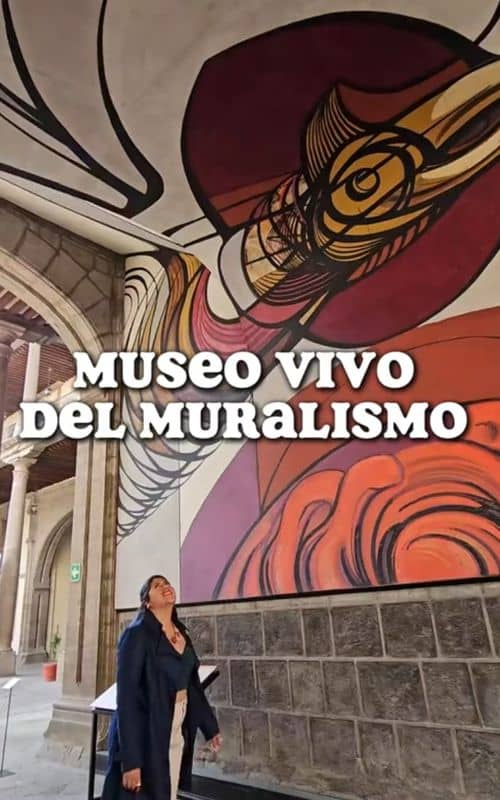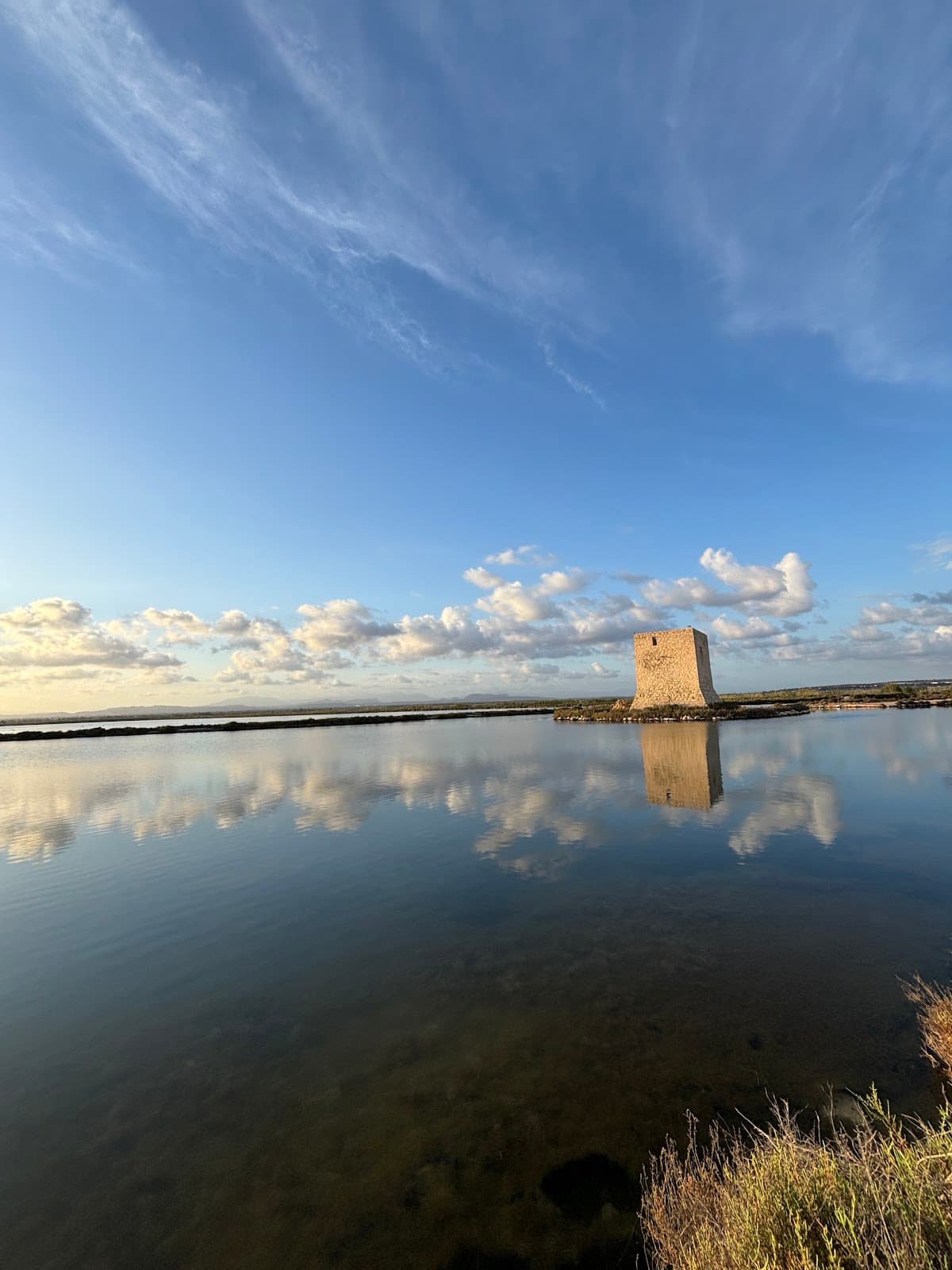
Salinas de Santa Pola Salt Museum
Discover the fascinating world of salt production and witness vibrant flamingo colonies at this free natural park and museum.

Highlights
Must-see attractions

Social
From TikTok & Reddit
Best Time
See flamingos & avoid heat

Salinas de Santa Pola Salt Museum
Best Time
See flamingos & avoid heat

Highlights
Must-see attractions
Discover the fascinating world of salt production and witness vibrant flamingo colonies at this free natural park and museum.
"A small but well-presented museum explaining the history of salt and the process of extracting it. "

Free Admission! :money_with_wings:
Entry to the museum and the surrounding salt flats is completely free.
Best for Early Birds :sunrise:
The museum closes at noon, so aim for an early morning visit to catch the best light and wildlife.

Highlights
Discover the most iconic attractions and experiences

Flamingo Colonies
Salt Lagoons
Witness vibrant flocks of flamingos wading in the pink-hued waters, a stunning natural spectacle.

Salt Production History
Museum
Discover the fascinating industrial process and history of salt extraction in the region.

Tamarit Tower Viewpoint
Near the Salt Lagoons
Enjoy panoramic views of the salt flats and coastline from this historic watchtower.
Plans like a pro.
Thinks like you
Planning Your Visit
Timing Your Visit
Getting There
Best Times
Insider Tips
from TikTok, Instagram & Reddit
Free Admission! :money_with_wings:
Entry to the museum and the surrounding salt flats is completely free.
Best for Early Birds :sunrise:
The museum closes at noon, so aim for an early morning visit to catch the best light and wildlife.
Wear Comfortable Shoes :athletic_shoe:
Explore the salt flats on foot; comfortable footwear is essential for walking along the lagoons.
Wildlife Spotting :bird:
Keep an eye out for diverse bird species, especially flamingos, in their natural habitat.
Tips
from all over the internet
Free Admission! :money_with_wings:
Entry to the museum and the surrounding salt flats is completely free.
Best for Early Birds :sunrise:
The museum closes at noon, so aim for an early morning visit to catch the best light and wildlife.
Wear Comfortable Shoes :athletic_shoe:
Explore the salt flats on foot; comfortable footwear is essential for walking along the lagoons.
Wildlife Spotting :bird:
Keep an eye out for diverse bird species, especially flamingos, in their natural habitat.
Rough Roads Ahead? :road:
Some access routes can be rough. Plan your navigation carefully to avoid getting stuck.
What Travellers Say
Reviews Summary
Visitors find the Salinas de Santa Pola Salt Museum to be an interesting and free attraction, offering insights into salt production and a chance to see flamingos. While the staff are friendly and the information well-presented, some find the directions to the museum challenging and note the lack of salt sales.
"Small museum, free to enter, interesting information about the Salt lakes and wildlife around the area. Directions weren’t great and we ended up driving down a very rough track to get there!"
Colin Farmer
"Well worth a visit, gives a fantastic insight into the production og salt,and the wildlife around the salt lakes."
Kenneth Sinclair
"Interesting place to learn about salt production in this area. The industrial process, and see some fancy flamingos. Entrance is free, open untill noon. Nice stroll bedside the salinas"
Ernest Fazekas
What People Like
What People Dislike
Frequently Asked Questions
🚇 🗺️ Getting There
The museum is located in the Natural Park of the Salinas de Santa Pola. You can reach it via the N332 road. It's also a short walk from Gran Playa. Be aware that some access tracks can be rough.
While specific parking details aren't widely mentioned, visitors can typically find parking near the museum and along the salt flats.
Yes, the salt lagoons are part of a route that can be explored by cycling, offering great views of the landscape and wildlife.
Information on direct public transport to the museum is limited, but it's a walkable distance from Santa Pola town, which is served by buses.
You can explore the lagoons by walking, cycling, or driving. Be cautious of rough tracks if driving.
🎫 🎫 Tickets & Entry
Admission to the museum and the surrounding natural park is free, making it an accessible attraction for all visitors.
The museum is open until noon. It's advisable to check for any seasonal variations in hours before your visit.
No, tickets are not required as the museum offers free entry. You can visit spontaneously.
While specific weekend hours aren't detailed, the museum is generally open until noon. It's best to confirm closer to your visit date.
Unfortunately, visitors have noted that you cannot purchase salt directly at the museum or the salt flats.
📸 📸 Photography
The pink waters of the salt flats, the large flamingo colonies, and the Tamarit Tower at sunset offer stunning photographic subjects.
Early mornings and late afternoons, especially during sunset, provide beautiful light for capturing the landscape and wildlife.
Drone usage regulations can vary in natural parks. It's recommended to check local rules and obtain any necessary permits before flying.
You can photograph various bird species, most notably the flamingos, as well as other flora and fauna adapted to the saline environment.
The area around the Tamarit Tower and the designated walking paths along the lagoons offer excellent vantage points for photography.
🎫 🌿 Nature & Wildlife
The salt flats are a haven for birdlife, with flamingos being the most iconic. You can also spot other migratory birds and various species adapted to saline environments.
The distinctive pink color of the water is caused by microscopic algae and tiny red crustaceans (Artemia salina) that thrive in the high salinity.
Absolutely! The Salinas de Santa Pola are a crucial stopover for migratory birds and a breeding ground for many species, making it a prime birdwatching destination.
It's a unique anthropogenically created ecosystem where salt is extracted. The environment supports specialized halophytic plants and a rich invertebrate and vertebrate fauna.
While not explicitly mentioned, local tourism offices or park authorities might offer guided nature walks or information on self-guided routes.
For Different Travelers
Tailored advice for your travel style
👨👩👧 Families with Kids
Encourage them to wear comfortable shoes for exploring the paths around the lagoons. Pack snacks and water, as facilities are limited. The open space allows children to move around, and the novelty of the environment often keeps them engaged.
🚶♀️ Nature Enthusiasts & Birdwatchers
The unique saline environment supports specialized flora and fauna, offering a different kind of natural beauty. The walking and cycling routes provide excellent opportunities for immersive exploration. Don't miss the chance to witness the stunning pink waters and the iconic flamingos.
📸 Photographers
Experiment with different angles and compositions to capture the vastness of the salt flats and the delicate beauty of the wildlife. The changing light throughout the day offers unique photographic opportunities.
Deep Dives
In-depth insights and expert knowledge
The Salt Production Process
This industrial process, while human-driven, has fostered a unique ecological balance. The saline environment supports specialized flora and fauna, creating a vibrant ecosystem within the salt pans. Visitors can learn about the historical significance of salt production in the region and its impact on the local economy and landscape.
The museum itself provides detailed exhibits on the machinery, techniques, and the people involved in salt extraction over the centuries. It's a fascinating glimpse into an industry that has shaped this coastal area.
Wildlife Wonders: Flamingos and More
Beyond the flamingos, the Salinas de Santa Pola are a crucial stopover point for numerous migratory bird species. Birdwatchers can spot a variety of waders, ducks, and other waterfowl throughout the year. The unique saline environment supports specialized plant life, known as halophytes, which in turn sustain a complex food web.
Visitors are encouraged to observe the wildlife respectfully from designated paths and viewpoints. Binoculars are highly recommended to get a closer look at the birds without disturbing them. The museum often provides information on current wildlife sightings and the best spots for observation.
Exploring the Natural Park
A key landmark within the park is the Torre del Tamarit, an old watchtower that provides panoramic views of the salt flats and the coastline. It's a particularly popular spot for watching the sunset, painting the sky in spectacular colors.
While you can't purchase salt directly, the experience of seeing the salt mountain and understanding the extraction process firsthand is a unique takeaway. The park is a fantastic destination for nature lovers, photographers, and anyone seeking a tranquil escape with a touch of natural wonder.






Social
from TikTok, Instagram & Reddit